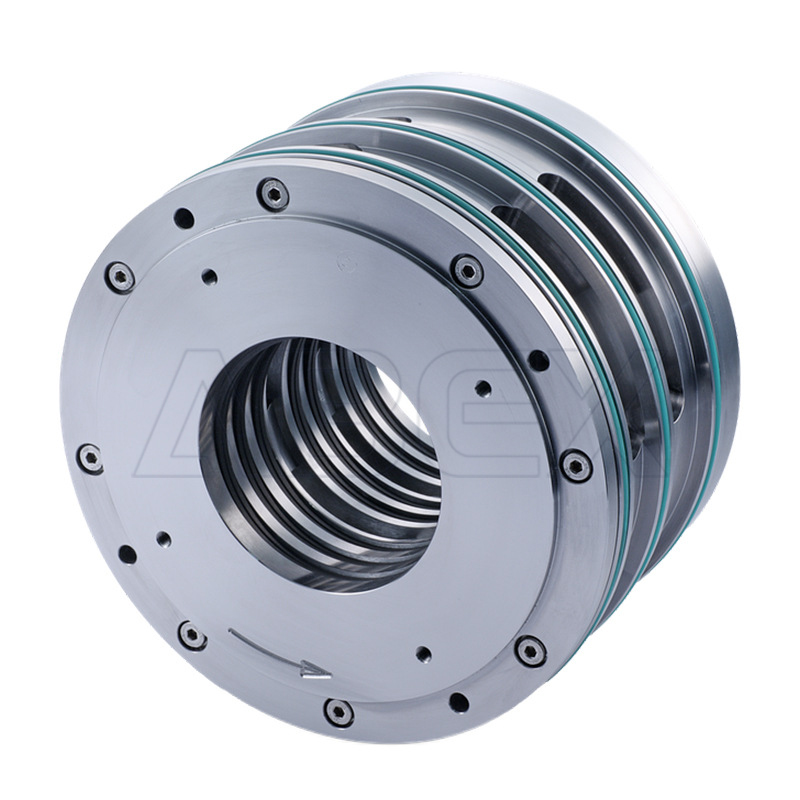Features
- Chamber seal (modular design – can be combined in any order), optional with housing and lid
- Multi-part seal rings, radially cut
- Very small operation gap – low leakage
- Dry running
- Self-adjusting seal rings
- Seal rings bear radial shaft movements
- Compensates axial shaft movements
- No sealing components mounted on the shaft and hence no additional shaft vibrations
- Seal rings running contact-free – sliding faces and machine consume no additional power
- Balanced seal ring inside chamber
Advantages
- High reliability
- Long-term operation time
- Maintainability
- Segmented seal rings for easy replacement
Operating range
Shaft diameter:
d = 20 … 340 mm (0.79″ … 13.39″)
Operating pressure:
p = vacuum … 15 bar (218 PSI) abs.
Operating temperature: t = -120 °C … +500 °C (-184 °F … +932 °F) for carbon,
max. 225 °C (437 °F) for PTFE compound
Sliding velocity:
vg = max. 240 m/s (787 ft/s) for carbon,
max. 40 m/s (131 ft/s) for PTFE compound
Radial play: ±2.0 mm (±0.08″)
Axial movement: theoretically unlimited
Recommended wear guard: >58 HRC
Materials
Seal ring: Carbon, PTFE compound
Chamber and housing parts: 1.4021, 1.4571, Hastelloy®, Titanium, Inconel®, others
Tension spring: 1.4571, Hastelloy®, Titanium, Inconel®,
Secondardy seal (elastomer): Fluorocarbon rubber (Viton®), Nitrile-butadiene-rubber (Perbunan®), Perfluorocarbon rubber (Kalrez®)
Secondary seal (flat gasket): Statotherm®-HT/HD, KSiL C 4400

